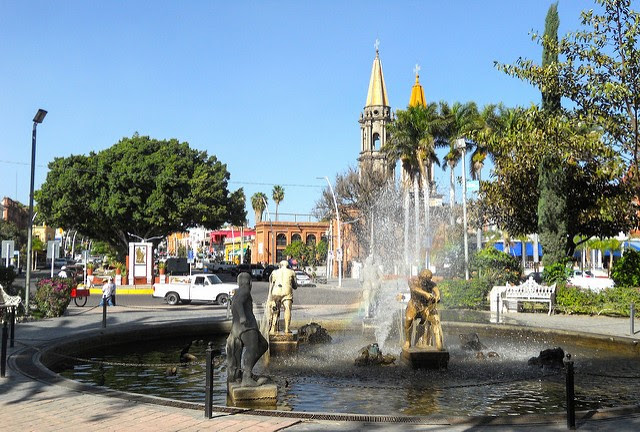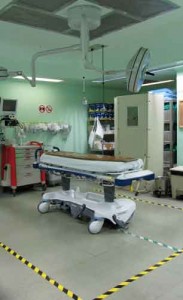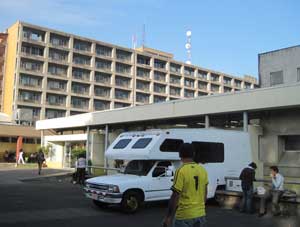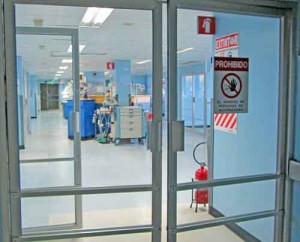Life in CR
Retire for Less in Costa Rica – February 28, 2017
Welcome to our Retire For Less In Costa Rica Newsletter
In This Issue:
- In the Mailbag – Relocation Tours, a Reader’s “The Good, the Not so Good and the Disappointing about Costa Rica,” Buying Appliances, and More
- If You Could Move Overseas Tomorrow for a Better Life…Would You? by Dan Prescher
- Invest Your Savings in Coopenae-Why We Do
- Our Ultimate CR Healthcare Tour
In the Mailbag – Relocation Tours, a Reader’s “The Good, the Not so Good and the Disappointing about Costa Rica,” Buying Appliances, and More
 We always get lots of responses and questions from readers, both newsletter subscribers and on Facebook.
We always get lots of responses and questions from readers, both newsletter subscribers and on Facebook.
![]() We recently did a two-day customized relocation tour for some nice folks who were kind enough to send us some feedback and their thanks. Here is their note:
We recently did a two-day customized relocation tour for some nice folks who were kind enough to send us some feedback and their thanks. Here is their note:
I know Paul is tired after the two day tour…His Grecia restaurant choice was good—we never expected to find good Mexican food in CR! Seriously, there was a lot of information. We appreciate it all.
We really enjoyed the people we met. Especially around San Ramon. Steve and John were incredible and seem like they have endless energy. In Grecia, Annie and Frank were true prizes. I can see why you and Paul think so much of them. We really liked them and think it’s great everything they’ve done and are doing.
The key is we met a lot of great people. They certainly aren’t just “hanging around until it’s over” in CR- they are making lives and an impact. We think that’s great!
The touring around towns was great! We really learned a lot just walking around town, walking into shops, markets, and culture centers, and just getting a feel. To give you one example, after we had driven through San Ramon a couple times last year we were sort of afraid to get out of our car and walk around. After spending the day walking around with Paul we would have no trouble living there and would not be afraid at all. In fact, we are now only considering two places in CR- Atenas and San Ramon (though we would bop to Grecia, San Ramon, and Palmares to go out for day trips and noshing around).
At any rate, thank you very much for the tour. Thank you very much for all the information. We both really enjoyed the days and learned a lot about Costa Rica.
T & B
Thanks T & B. We enjoyed getting to know you and showing you “our” Costa Rica. Let us know if you have any questions going forward. The info exchange doesn’t stop with the end of the tour!
![]() After spending a month living in Santa Ana, our past tour guests Hector and Hildie wrote us to give us their thoughts about “The Good, the Not so Good and the Disappointing about Costa Rica.” They are allowing us to share it with our readers.
After spending a month living in Santa Ana, our past tour guests Hector and Hildie wrote us to give us their thoughts about “The Good, the Not so Good and the Disappointing about Costa Rica.” They are allowing us to share it with our readers.
The Good:
- Metropolitan Hospital/Medismart. The discount bought us very good care:
- Ophthalmological care -They discovered a medical problem that could have led to glaucoma. Something like that develops over three to four years. Annual check ups in the US did not discover it. It is easily remedied with eye drops (low cost, with pharmacy discount)
- Physical Therapy: $15.60 for a whole hour with a licensed therapist who received additional training in Germany. Hildie’s long standing problem (tendinitis/epycondilytis) had been solved.
Uber/The Internet/Cell Phones. Since we want to live without a car of our own, Uber is a life saver! We quickly figured out what to input so that they could find us (hint: not GPS, more like landmarks, restaurants etc.) and we met the nicest people, from teachers to warehouse workers, government employees, chemical engineers and sales people. We used it a lot and spent less than we do on our car in the U. S. in an average month. Internet coverage was flawless, much better than what we have in the U. S.
- Proximart. There was a spanking new “Mini Super”, clean and air conditioned, less than 300 ft. away – very reasonable prices, some prices under those of Mas x Menos, fresh produce, and an incredible international assortment of goods, from Swiss Ricola to Italian rice cakes.
The Not So Good
- Santa Ana. Rusty huts next to gleaming high rises; traffic congestion; and some neighborhoods really look dangerous. Too eclectic to be called “upscale.”
- Real Estate. For our needs (a safe home and neighborhood, accessible without our own car, large enough, attractive) we’d have to spend as much as our home is worth here. Nothing under $1,000/month to rent in Santa Ana. Much lower when going directly to builder or owner.
- The prices. The Sunday morning market isn’t cheaper than the supermarkets, and most offerings obviously come out of storage. The cauliflower everywhere was moldy, and the vendors cut off rotten carrot tips to sell them as fresh…. Restaurant dinners were way more than what we pay here.
The Disappointing
- The homeless sleeping on the sidewalk next to the hospital… and beggars in the streets of Santa Ana
- The vacation rental. Rusty doors and appliances (I had the same models in 1981), the second bedroom was no more than a walk-through closet to the bathroom. But the people were so friendly and helpful, we didn’t feel we should complain.
- The weather. Oh, that humidity. Some of our clothes got moldy. But the afternoon showers were on time!
We can understand why some people may give up on the idea of moving to Costa Rica. Not us, we still love the people and the gorgeous nature – the butterflies on every shrub and flower – and the range of temperatures at the altitude we want to be, such as Palmares and Grecia. We just have to keep looking for the right place to live, within our budget.
Hector & Hildie
Thanks Hector and Hildie! I’m sure some of our readers will find your reflections about your time in Santa Ana especially helpful.
![]() Here is a question about why we moved into an apartment in town, plus info about buying appliances in Costa Rica, from TicoTom:
Here is a question about why we moved into an apartment in town, plus info about buying appliances in Costa Rica, from TicoTom:
Howdy. I read your thorough explanation of your recent move into San Ramon. I’m curious what motivated you to move into the center of town?
There is another option for purchasing appliances and electronics that I discovered during my 24 years of living and working here. In San Jose, there is a warehouse where a guy distributes appliances and electronics from Golfito. If you call the guy, and tell him exactly what you want to purchase, he can get you the same brand and model you find in the local appliance stores, usually for considerably less. Since I am the administrator of furnished rental apartments in the central valley, I’m always in need of appliances that need to be replaced and or repaired.
Obtaining a certified warranty for your appliances is as important as what brand and what discount you obtain. I recently had the need to purchase a dryer and after investigating the options, I decided to purchase a gas dryer to save on electricity consumption. I found out an important fact to be considered; the gas dryers sold here are not manufactured for the propane gas tanks available here, and the machines need a conversion kit to be installed or the dryer will burn your clothes. I called the appliance guy and he offered me the same Whirlpool gas dryer I had found at the local appliance store for $80 less than the best deal I could find and he delivers and shows you how to install all the appliances he sells. I asked him about the conversion and warranty and he told me that he would give me an official receipt from an appliance store in Golfito and that I needed to guard the receipt and call a toll free number to schedule an appointment for the conversion or any future service. The receipt was in the name of another person, but this is not important for warranty purposes. The appliance guy delivers the appliances he sells to your home and helps you set them up. So after I purchased the dryer and the guy delivered it, I called the toll free number and within three days the technicians arrived to make the conversion of the new gas dryer and I have a one-year warranty for the dryer from the manufacturer. I and many other friends have purchased various appliances from this guy over the past 10 years and he is very reliable and stands behind what he sells.
I selected a gas dryer because it only consumes 110-volt electricity to run a small motor. The big savings comes when you’re not consuming 220 volt electricity for the heater. Gas tank replacement just increased to 8000 colones and that lasts for a month and my electric bill increased only 2000 colones. So there is great savings, as some friends have told me that their electric bills increased by 20,000 colones a month with an electric dryer. Additionally, the gas dryer heater is like a gas cooktop, it’s much more efficient than an electric appliance.
If you would like to contact Tom’s English-speaking appliance guy, his name is David Cohen and his phone number is 8322-1964. And here is our answer to him about why we moved into town:
Hi Tom,
Thanks for getting in touch. We had been living in the country for the last eight years and, I especially, loved it. But the negative was that we were a bit isolated from Ticos, local culture, and opportunities to speak Spanish. Those things were especially important to Paul. We both wanted to improve our Spanish and the best way to do that is be speaking it often. Plus, living in town would be a new experience. It is extremely convenient and is a different way of life. Besides the noise of the motorcycles and other traffic, we’re liking it. Since we are renting, we have the flexibility to try new things and move more easily than if we owned a home.
Thanks for asking!Gloria
![]() And on Facebook, we received lots of comments about the article, “10 Ways to Fit In When You Retire in Costa Rica.”
And on Facebook, we received lots of comments about the article, “10 Ways to Fit In When You Retire in Costa Rica.”
Paul started off the discussion with this comment:
We went to a wedding shower yesterday. We had lots of fun, speaking Spanish & dancing. They had singers too & because I lived in Mexico was able to request some songs, which they sang. Unfortunately, we had to come home to feed the cats after 5 hours or we’d still be there.
Alan O. commented:
Rule Number One: Learn to speak Spanish fluently.
Paul responded with:
The first thing the article mentioned was the Spanish, but I think fluently is asking a lot. I would say, do the best you can,” but REALLY TRY, & KEEP AT IT. If you can get past the basics, well that’s where the true adventure lies.
Barbara B. commented:
I don’t agree with needing to speak fluently to mix with locals. We get by with our Spanish and we have many Tico friends who speak English and we
get together all the time! Even if there are some who don’t speak fluent English, we muddle through with broken languages and still enjoy. We were told by quite a few expats that locals are not the type to welcome you into their home or open up right away but we have not found that, we treat everyone as equals and friends. As long as you are trying, food, drink, music, and laughter are universal.
We couldn’t agree more Barbara!
Exactly right. I was just having that exact conversation with someone the other day. There is no way to explain or put into words the culture shock…I think the type of research you do and the type of things you research are big factors. For example, many people read the feel good I moved to Costa Rica and now my life is wonderful books and never get down to the nitty gritty research or spend time during their due diligence trips here actually sitting down and talking with people who are long term residents.
This is the best article I have read on living in Costa Rica and thriving. Thanks.It was hard to wake up to the fact that Costa Ricans aren’t above stealing from their neighbors, as evidenced by the high security fences and doors on every house in San Ramon. I needed to realize that Ticos see Gringos through filters that make it okay to steal from us, whether it be for millions of dollars (i.e. Ann Patton), or for the 1 dollar price hike for the only Rifa ticket I ever bought. Yup, we are for sure a target, and to deny that is silly. But, there are plenty of grifters from the USA who are here to steal whatever they can for as long as they can get away with it. And these Gringos are in it for all your money, not just 500 colones!!!
All the crooks and con men I’ve met in Costa Rica were gringos.
And from Helena G.:
I agree with Keith (above). I liked the part about building a life! I think moving to another culture later in life forces reflection on ones values and purpose. I also like trying to get around in another language. And we JUST moved to San Ramon after 10 years in Nosara. A more normal “retirement” than the beach. I will probably get to know the local healthcare system since that is my main interest.
Ginnee H. commented:
Many who leave never really intended to stay.
To which Helena G. replied:
I think that is a very good point. When we moved in 2005, we talked about giving it 5 years. I think it took us that long to adjust to moving. Just finding out how to get things done and get to know people. And after five years, we were different people and, around that time, we decided we wanted to move but we wanted to stay in Costa Rica. We just like it here. And so we started looking for where to move. We considered San Carlos, Tilaran, cities in the Central Valley and then San Ramon. And so we start Part 2 of the Move. We never intended to go back, that was 10 years ago. We have no regrets about our choices and love where we live.
And, lastly, from Janet M.:
Great insights and observations, Gloria. Our decision to make CR our new home was based on much of what you wrote..an open window of time naturally unfolded..parents gone, kids/grands grown/gone, and our financial situation for retirement became more sustainable. We reads lots (your blog especially and others) so knew buying immediately wasn’t wise for us. So now we are in an old established Tico country neighborhood close to downtown Palmares with our own furnishings and feeling ‘right’ with our new world…”Bear” walks and talks every day with new amigos and I’ve started a new local Tico-Gringa garden club. Perfect for now. Thank you, Gloria, for opening this discussion!
Thanks, everyone for the lively discussion.
Related Articles:
- “10 Ways to Fit In When You Retire in Costa Rica.”
- “Why Are People Leaving Costa Rica?”
- MediSmart: An Affordable Alternative to Private Health Insurance in Costa Rica
- Read our other In The Mailbag columns at this link.
If You Could Move Overseas Tomorrow for a Better Life…Would You?
By Dan Prescher
(Originally published by International Living, February 6, 2017. Used with permission.)
On a recent visit back to the U.S., I met some new friends at a party who wanted to know why my wife and I have been living outside the country for the past 15 years.
I often get this question, and after answering it so many times over the years, I’ve developed a fairly concise answer, and that’s what I gave the folks at this party.
“If you could move somewhere tomorrow with year-around warm weather, excellent healthcare, lower taxes, friendly people, beautiful scenery, and cut your cost of living in half at the same time…would you do it?”
After everyone nods their heads, I say, “That’s all we did. We moved where we could live happier, healthier lives for less than we were paying where we were.”
The next question is usually about where we moved to find this high-quality, low-cost lifestyle. Things get a little complicated then, because we’ve lived in seven different communities in four different countries so far, and each one has all the qualifications I mentioned above. And there are dozens more places like them around the world…like Lake Chapala in Mexico, which we’re trying out for a few months right now.

After this sinks in, I’m usually asked why we weren’t happy or healthy where we lived in the States. I explain that we were happy and healthy…we were as happy and healthy as we could be. We just found some places to live where we could be even happier and healthier.
The fact that we could do that and cut our monthly budget in half was icing on the cake.
That’s when most folks start expressing doubts about being able to leave their friends and family and comfort zones, and the folks at this party were no different. And if they expected me to try to convince them that this wouldn’t be a problem for them, they were disappointed.
In fact, I encouraged them to think of all the reasons they might not be happy moving abroad. I made the point that moving abroad is definitely not for everyone. It’s not even for most people… Otherwise, considering the benefits, most people would have already done it.
But most people choose to stay right where they are, and that’s exactly what they should do. There is a certain combination of circumstances, predispositions, skills, and opportunities that go into a successful move abroad. If those things don’t line up, a move abroad probably isn’t a good idea, especially a move taken simply for economic reasons.
It’s absolutely possible to live on less money when you move overseas, but if that’s the only reason someone moves, they’re simply economic refugees, and they won’t be happy.
The curiosity needs to be there. The sense of adventure needs to be there. The love of a challenge and novelty has to be there. The willingness to be a little uncomfortable in unfamiliar surroundings needs to be there.
If these things are missing, then the answer to my original question above is obvious.
“If you could move somewhere tomorrow with year-around warm weather, excellent healthcare, lower taxes, friendly people, beautiful scenery, and cut your cost of living in half at the same time…would you do it?”
Knowing yourself well enough to confidently answer “no” is a blessing, because knowing yourself is the most important thing in life no matter where you live. It makes all your other decisions possible.
Likewise, knowing yourself well enough to confidently answer “yes” could be the start of something big.
Invest Your Savings in Coopenae – Why We Do
If you’ve been reading our newsletter for a while, you know that we’ve been investing our savings in certificates of deposit at Coopenae for many years now. We’ve just contacted Asdrúbal Zamora, Coopenae’s National Investment Officer & Expat Liaison to verify their current investment rates and to update their ratings info. We chose Coopenae because of their history of great rates and low risk. Following is the updated article with current info.
Updated February 26, 2017
Why invest in Coopenae?
- Audited by Fitch Ratings (auditor of banks worldwide) from which we got excellent ratings (AA-): expectation of very low risk; risk differs very little from the highest possible ratings (see below for details).
 Extensively monitored and controlled, just like other public and private banks in Costa Rica, by SUGEF (General Superintendence of Financial Entities) and our overall rating is an outstanding 1.10, where 1.00 is the best possible.
Extensively monitored and controlled, just like other public and private banks in Costa Rica, by SUGEF (General Superintendence of Financial Entities) and our overall rating is an outstanding 1.10, where 1.00 is the best possible.- Audited by well-known international companies, last period, by Peat Marwick (KPMG Dec. 2016).
- Controlled by the internal audit of Coopenae, and watched by an independent Committee of Investors at every home Branch.
- Followed by the competition and valued by our Members.
- The Costa Rican financial system has been changing. 20 years ago, Banco Nacional was 100 times larger than Coopenae; today, only 9 times. 20 years ago, Banco de Costa Rica was 70 times larger than Coopenae; today, only 7 times.
Credit Portfolio:
The loans we give are mostly to government employees, and payment is made monthly through automatic payroll deduction. Also, our performance in credit default on the loan portfolio late over more than 90 days in Dec. 2016 is only 0.86%, one of the lowest in the domestic financial market.
Excerpts from Fitch Ratings Report Regarding Coopenae – August 2016
Robust Equity: Capitalization is Coopenae’s main strength, with an indicator of Capital Base according to Fitch Ratings of 21.3% at March 2016. This level provides a good capacity to absorb losses. The indicator of capital of the company has been gradually reduced in terms of growth, albeit much slower than their peers in the credit union sector.
Portfolio impairment low: Coopenae maintains a good portfolio quality, based on appropriate risk administration and management structure with direct discount charges through payroll deduction. In March 2016, loans late over 90 days accounted for 0.9% of total loans (credit default rate), a level that is favorably compared to other credit unions qualified by the agency.
Good liquidity and term mismatching: The liquidity of the institution is good and is made mostly by local securities available for sale. These liquid assets cover about half of total deposits, exceeding the average level of their peers in the credit union sector.
The company ranks first in terms of assets with a market share of 24.3%. The franchise of the institution is strong within the credit union system. As for deposits, it holds first place with a share of 25.1%, which shows largest passive franchise in the sector.
The institution does not have goals related to maintaining market position, but instead favors a healthy sustaining of the institution’s performance. It is observed that they stay within their annual budgets.
Risk appetite: Moderate Risk appetite is favorable against peers in the credit union sector. The Coopenae risk appetite is moderate, this is reflected in its portfolio growth lower than that of their peers and more prudent loan volumes. This is demonstrated in the improved quality of assets of the credit union compared to its peers. The institution has remained true to its segment (government employees), of which it has a good knowledge. Recently, the institution made some adjustments in policies to become more restrictive, by observing an increased credit default rate in 2015 within the credit union system.
Service:
We feel an obligation to regularly inform our Members (current and potential) on our performance in order to have the possibility to follow up on the results that are obtained. That is why Coopenae is the largest Costa Rican supervised private financial company and the 3rd largest in Latin America.
Current (February 2017) Certificates of Deposit Rates for Investments in Colones:
Asdrúbal Zamora
National Investment Officer & Expat Liaison
Cell Phone (+506) 8811-1602
Corporate Email: [email protected]
View and/or download Coopenae’s corporate presentation below:
![]()
Our Ultimate CR Healthcare Tour
We are proud to offer the Ultimate Healthcare Tour of Costa Rica. When asked what he liked best about our healthcare tour, one of our guests wrote, “the wide variety of places we saw, the experts that Paul  arranged for us to meet and talk with, and an emphasis on all aspects of health, not just doctors and hospitals. Mental health is just as important as physical, if not more so.”
arranged for us to meet and talk with, and an emphasis on all aspects of health, not just doctors and hospitals. Mental health is just as important as physical, if not more so.”
We’ve lived in Costa Rica for over seven years and have used the Caja, Costa Rica’s public healthcare system extensively, as well as the private system, when needed. We’ve learned the system and have been referred up the ladder to see specialists in the maze that is the Caja system. Gloria’s even had surgery here.
Our blend of personal insights and on-the-ground experience combines to answer your questions about whether or not Costa Rica’s healthcare system could meet your individual needs.
But, while it is focused on healthcare, you will learn a lot more about living and retiring in Costa Rica’s Central Valley. Most of the second day of the tour takes place in the town of San Ramón where we live and use the services. And you will come to our home for lunch that day to listen to two presentations.
Our tour is designed to save you both time and money, packing a lot of information into a short period of time. Our goal is to show you the possibilities and to try to demystify Costa Rica’s healthcare system. Our tour lasts two days and 1 night and includes lodging, transportation, meals and non-alcoholic beverages.
Sample Itinerary
You’ll visit:
- At least two private hospitals in San Jose area
- Hospital Mexico, the largest and best public hospital (they even do open heart surgeries there)

- An insurance broker for a presentation on the various supplemental health insurance options, including public, private, and international plans
- A senior living retirement community
- CPI language school for a presentation about how learning Spanish increases your options for healthcare and some basic medical Spanish.
- Our local hospital here in San Ramón
- A local EBAIS (community clinic)
- The office of our dentist in San Ramón
- A local Seguro Social office where you would sign up for the Caja (national healthcare coverage)
- A pharmacy
- A local feria (farmer’s market) where you will see the abundance of fresh food available.
- The local Cruz Roja (Red Cross) to learn about their services and programs.
- A health food store (macrobiotica), and more!
You’ll learn:
- If the Costa Rican healthcare system could meet your needs and put your mind to rest, once and for all, about this sensitive subject.
- About the public system and how it works, about the private healthcare system, and how you can use a combination of both to your advantage.
- About the EBAIS – where healthcare starts in Costa Rica.
- Approximately how much you would pay for Caja.
- About medical tourism in Costa Rica.
- About home health care in Costa Rica.
Prices: $650 for a couple, $550 for a single.
Please contact us if you are interested in booking a tour. Space is limited.
Related Articles:
- Paul Gets a CAT Scan Through the Caja
- Integration 102 – Speaking Up at the Hospital
- Waiting to See the Doctor, by Jo Stuart
 Facebook, Twitter, & YouTube
Facebook, Twitter, & YouTube
![]()
![]()
![]() You can now follow us on Facebook and Twitter, so please “like” us on Facebook, “follow” us on Twitter, and watch and share our videos on YouTube.
You can now follow us on Facebook and Twitter, so please “like” us on Facebook, “follow” us on Twitter, and watch and share our videos on YouTube.
 What’s New on the Website
What’s New on the Website
Check out our newest posts on www.retireforlessincostarica.com:
- Our January 2017 Costa Rica Cost of Living
- What’s Up with the Yeatmans? Moving, Shopping, and Buying
- Con Mucho Gusto: The Tico Way
- Paul’s Money-Saving Tip to Live for Less in Costa Rica-Use WhatsApp and Save on Telecommunications Charges
- What’s Up with the Yeatmans-January 23. 2017
- Our November and December 2016 Costa Rica Cost of Living
- In the Mailbag-A Reader’s Experience with Medismart-January 2017
- Our 2015 Annual Cost of Living in Costa Rica Summary




